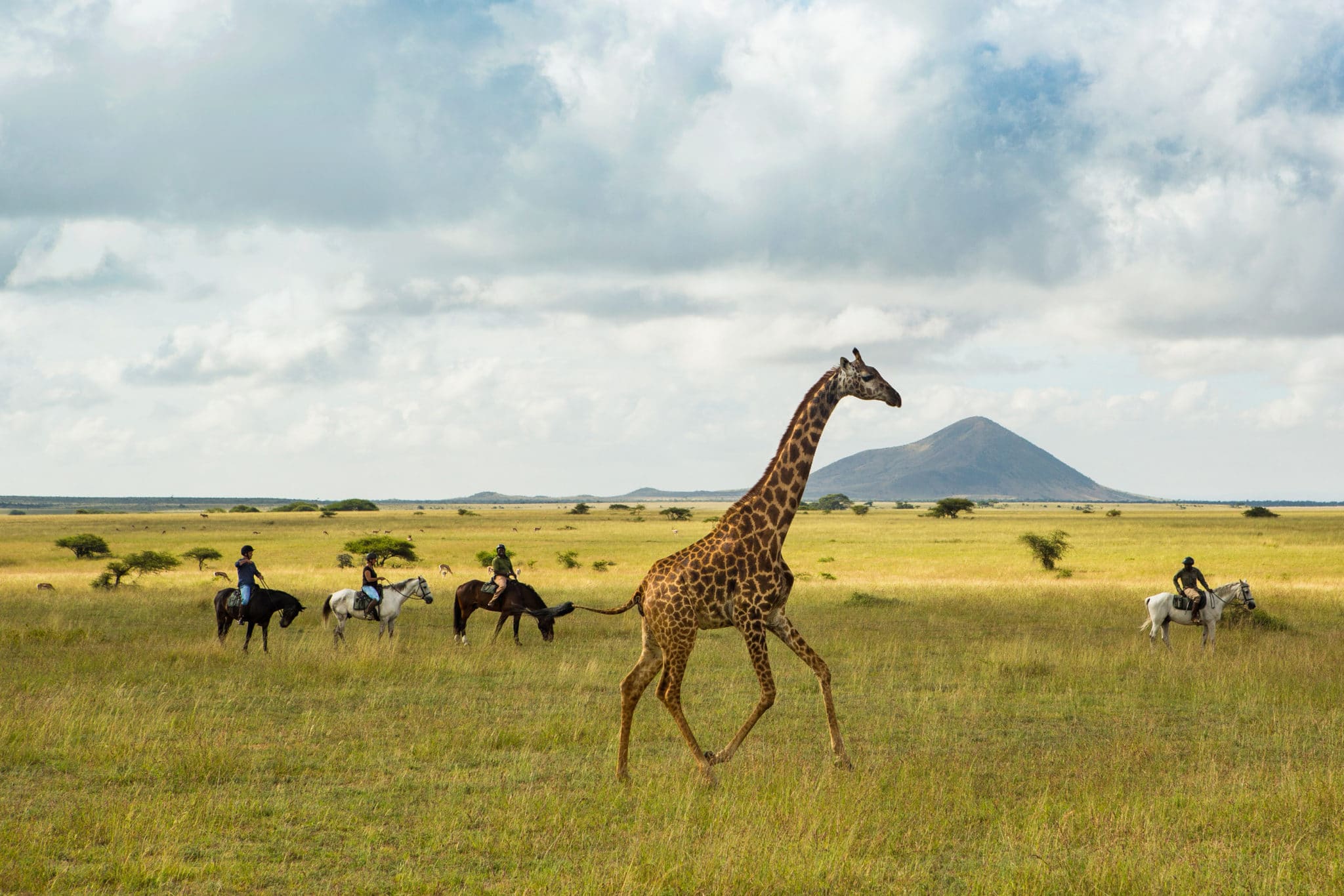Lesser known than than Mara but equally brilliant for safari, the volcanically-formed Chyulu Hills sizzles with a special energy, says Sarah Marshall
Stood atop a stack of ancient balancing rocks, the sight below me is extraordinary. Large herds of oryx shift across open grasslands as clouds lift to reveal the curves of grassy mounds. Glinting in the distance, the snow-capped tip of Kilimanjaro soars upwards in a perfect cone.
Today, the only rumblings I hear are from lions and elephants, but this undulating landscape was once a hothouse of volcanic activity. Part of a range that formed 1.4 million years ago, the Chyulu Hills are relatively young in geological terms, with the last recorded eruptions occurring in 1855. And although blankets of grass have since softened any angry tectonic upheavals, energy from fiery lava flows still runs through hilltops and stimulates life from the fertile soils below my feet.
“There’s something very special about this place,” whispers my safari guide, Jackson, as we watch a hazy dawn sun emerge from the mist.
“Some people even say it sits on ley lines.”
Regardless of whether supernatural pathways pass through the Chyulus or not, this national park in southeast Kenya certainly has the power to captivate imaginations, supposedly providing the inspiration for Ernest Hemingway’s book Green Hills Of Africa.
Although it receives far less visitors than flagship wildlife destinations, such as the Maasai Mara and Lewa, it’s an equally important ecosystem. Sandwiched between the red earth soils of Tsavo and the swamps and marshlands of Amboseli on the border with Tanzania, it’s an important migration corridor for elephants.
“This national park in southeast Kenya certainly has the power to captivate its visitors’ imaginations”
I meet some of the region’s male bull residents later that morning, when I visit a hide built next to a man-made watering hole. Some have tusks so long they spar like fencers as they battle greedily for the water source. At a time when most big tuskers have been almost genetically wiped out by decades of ivory poaching, they are a reminder of how magnificent this species once looked.
A particularly striking example is an elephant affectionately known as One Ton.
“He’s one of our regulars,” explains Graham Mckittrick, host manager at Ol Donyo Lodge, one of the few places to stay in the area.
Set at the foothills of the Chyulu Hills National Park, 11 thatched cottages are spread across a gentle slope on the 111,000-hectare Mbirikani Group Ranch – community land owned by 4,000 Maasai. Built with ancient lava rock which once flowed from Kilimanjaro, the space radiates a warm and earthly glow.
Between game drives, I sit in my private plunge pool, watching giraffes glide across the horizon, their tall frames dwarfed by the epic scenery. During the day, klipspringers bolt through bushes, bright hornbills flash between treetops, and langur monkeys bathe boldly on terraces – making themselves just as much at home as paying guests.
Even after dark, nature continues her display. One night, I crawl into a star bed on the rooftop of my suite, listening to lions roar somewhere below the burning bright constellations, until I drift off to sleep.
Filmmakers and photographers with an eye for beauty, Dereck and Beverly Joubert were so captivated by the Chyulu Hills, they chose to bring Ol Donyo Lodge under their Great Plains Conservation umbrella15 years ago. The couple quickly recognised its ecological importance.
“We have one of the only continuous unfenced populations of black rhino in Kenya,” explains Graham, when we head out early one morning on a walking safari. In so many places, populations have been poached to extinction, with animals reintroduced at a later date. But here, lava flows have created a fortress, providing a natural refuge.
“Chyulu’s mysterious hills have a magic and magnetism that will continually draw you back”
Climbing over sharp, rough parapets and a moat of whistling thorns, it’s no surprise to learn the rhinos are rarely seen. But its still reassuring to know they are tucked safely somewhere inside.
Along with geological fortifications, non-profit organisation Big Life has played a key role in securing the survival of these animals, employing community scouts and establishing a security monitoring programme at the peak of the poaching crisis.
The son of a well-known Kenyan game warden, conservationist Richard Bonham was one of the first people to negotiate a tourism land lease from communities when he started building Ol Donyo in the 1980s. He later sold the property to Great Plains but continues to live nearby in a bohemian open-air house with his wife Tara.
Co-founded with photographer Nick Brandt and entrepreneur Tom Hill, Big Life has successfully co-ordinated cross-border anti-poaching operations between Kenya and Tanzania, protecting more than 1.6 million acres by employing hundreds of local rangers.
But the biggest threat, Richard tells me when we meet at his home, is ongoing conflict between communities and wildlife, made worse by the sub-division of farmlands which block elephant corridors. Like so many conservationists, he faces ongoing challenges and frustrations, with no easy solutions readily available. His ongoing commitment is testimony to how special this place is.
Late in the afternoon, I hike to one of the Chyulu’s many viewpoints. Perhaps it’s the fronds of red oat grass tickling at my skin, but the sensation of standing here is electrifying.
Whether mapped by lava flows, ley lines or ancient migratory paths, Chyulu’s hills have a magnetism that will continually draw you back.
HOW TO PLAN YOUR TRIP
Rooms at Ol Donyo Lodge start from $1,045USD/£872 per person per night (two sharing) full board, including Big Life conservation fees. Visit greatplainsconservation.com
Exceptional Travel can arrange packages with flights. Visit exceptional-travel.com
For more information on Big Life Foundation, visit biglife.org








